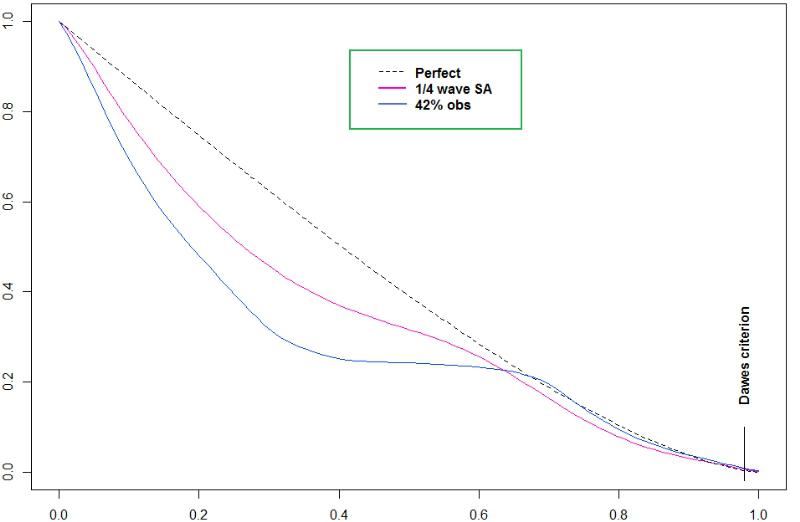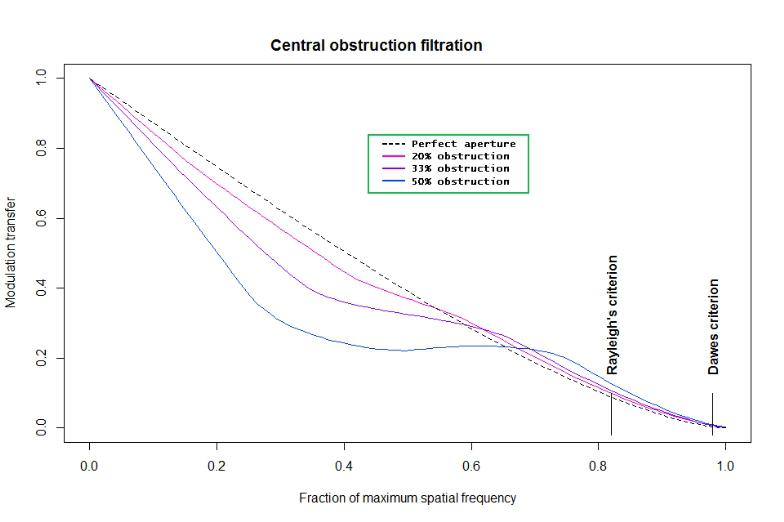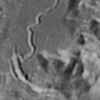
I cant believe the size of the LX600........
#1

Posted 01 January 2013 - 06:13 PM
IS THIS SCOPE mostly aimed at the AP crowd?
Does anybody have one of them yet for a review?
#2

Posted 01 January 2013 - 06:45 PM
Mick
#3

Posted 01 January 2013 - 07:06 PM
#4

Posted 01 January 2013 - 07:57 PM
Why isn't it possible to change the Primary F ratio?
Then reduce the Aspheric diopter correction and lengthen the tube and defrease the secondarys size?
You would think F 4 Primary and a 25% longer tube
which would allow a 40% secondary size reduction should be doable? Or are the pairs "locked" into the ratios due to the restrictions of the SCT format?
#5

Posted 01 January 2013 - 08:15 PM
#6

Posted 01 January 2013 - 08:34 PM
#7

Posted 01 January 2013 - 10:02 PM
I get the impression that some folks mistakenly believe secondary obstruction-induced contrast diminution applies at all scales.
#8

Posted 01 January 2013 - 10:11 PM
David
#9

Posted 01 January 2013 - 11:08 PM
#10

Posted 02 January 2013 - 11:01 AM
Secondary obstruction! HOLY COW!! How can that thing have enough clear aperture to have any contrast at all?
IS THIS SCOPE mostly aimed at the AP crowd?
Does anybody have one of them yet for a review?
This is, I believe, unchanged from the RCX400 version of the f/8 optical tube. Despite the obstruction, the 10-inch I had the pleasure to use worked well and produced outstanding images visually.
#11

Posted 02 January 2013 - 01:02 PM
#12

Posted 02 January 2013 - 05:29 PM
When low power was used that's when the CO was apparent the sky was not as black as it could have been.
This was due to the larger exit pupil, which delivers an image of higher surface brightness.
As I pointed out earlier, a large obstruction affects contrast at very small scale, of order an arcsecond. It *does not* cause a brighter sky, in the way widely scattered light can, such effect being called veiling glare.
Again, I'm astonished at the vast ocean of confusion out there in amateur land, as regards even the fundamentals of contrast transfer in optical instruments. I really wish the community as a whole would finally get these matters straight, and not propagate the same old misinformation generation after generation.
#13

Posted 02 January 2013 - 06:28 PM
So if the CO makes no difference, why do Compound Camera lenses never have the contrast levels of a similar sized non obstructed one? I have never seen one or heard of one mentioned in the Photo mags.When low power was used that's when the CO was apparent the sky was not as black as it could have been.
This was due to the larger exit pupil, which delivers an image of higher surface brightness.
As I pointed out earlier, a large obstruction affects contrast at very small scale, of order an arcsecond. It *does not* cause a brighter sky, in the way widely scattered light can, such effect being called veiling glare.
Again, I'm astonished at the vast ocean of confusion out there in amateur land, as regards even the fundamentals of contrast transfer in optical instruments. I really wish the community as a whole would finally get these matters straight, and not propagate the same old misinformation generation after generation.
Also my 102mm ED refractor has much better Planetary images than my 6" SCT, which shows very good defraction patterns,
but the background sky isn't as inky black as the non obstructed one even working at the same or faster F ratio?
Can you show me lab data that will help me understand this?harts or graph form, or even a controlled head to head test?
Don't get me wrong I am a Schmidt and Mak lover, I was just blown away by the refractor I literally stumbled onto as a throw in on a trade?
I'm just having difficulty grasping the concept, I had read in S&T that the larger secondary has a thicker defraction ring, that gets spread across the entire image that decreases contrast on a scale determined by the % of the obstruction?
Also why is it always such a big topic over in the Refractor Threads?
Please remember the vast majority of us are Blue collar workers and not Theoretical Physicsts by trade. Were on the viewing end not the developmental one.
#14

Posted 02 January 2013 - 06:45 PM
No doubt a good 4" refractor displays a more contrasty image visually than a 6" with largish obstruction. But the 6" will compete imaging wise.
For details on how to read an MTF consult Suiter's book.
Glenn
#15

Posted 02 January 2013 - 06:54 PM
#16

Posted 02 January 2013 - 07:47 PM
That chart made perfect sence to me, I was just getting conflicting storys
#17

Posted 03 January 2013 - 02:18 AM
The extra energy deposited into (primarily) the first diffraction ring affects contrast, by definition, over the scale of said ring's radius. For most amateur scopes this is something in the region of one arcsecond. At image scaleslarger than this, the effect becomes negligible.
What do you mean when you say "spread over the full image"? The full field of view? If diffraction were of such magnitude as to actually brighten the sky, this would imply that all stars, and indeed all brighter-than-sky extended objects in the field would have to be diffracted into invisibility.
There is no such thing as a 'pitch black' sky, except when the exit pupil is less than 1mm (even for a truly pristine, zenithal sky), or a narrow-band filter is employed at moderate to small exit pupils.
If you select at random any patch of sky of arbitrary size (arcminutes to tens of degrees across), statistically the sky glow will be at least 3 magnitudes, or 16 times brighter than the light from the resolved stars. And that's for a pristine sky of 22 MPSAS! A suburban sky of 21 MPSAS will therefore be fully 4 magnitudes, or 40 times brighter.
What this means is this. Even if you were to completely, utterly and evenly spread out the light of the resolved stars, the light therefrom could at best only brighten the sky by a few or several per cent. This bears pausing and cogitating upon.
Therefore, if the *tiny* bit of energy robbed from the stars' Airy disks is not the source of the brightening you observe, what is? Could it be the sky glow itself? No. A uniform glow cannot augment upon itself when the light is further diffused, be it by diffraction or other means. If you focus upon and then defocus an evenly illuminated wall, for example, your camera will deliver the identical surface brightness for given aperture and exposure time.
If anything, the larger central obstruction should further *darken* the sky--at given exit pupil diameter-- due to light subtracted thereby. And indeed, this is just what occurs. In order to actually brighten the sky to a visibly sensible degree, light must come from *outside* the FOV, or from a very bright source within the FOV, and be scattered throughout the field as veiling glare.
So the question I put to you; *exactly* what is the source of light which brightens the sky further due *only* to an increase in central obstruction?
I invite any and all to address this, if an opinion is held.
#18

Posted 03 January 2013 - 05:26 AM
If a central obstruction causes a brighter sky 'background' (actually, foreground), then the following must be in accord.
A refractor and some particular eyepiece produce an exit pupil of some particular diameter and hence an image of some particular surface brightness.
One installs a circular obstruction centrally on the objective whose relative diameter is 0.5. The light subtracted thereby is thus 25%, leaving 75% to contribute to image formation. Yet according to the thesis espoused, the sky is not to become dimmer, but instead actually to get brighter!
By what mechanism of arcane physics is this to be achieved? Whence comes the light?
#19

Posted 03 January 2013 - 10:50 AM
#20

Posted 03 January 2013 - 11:56 AM
Brightness has has absolutely nothing to do with it. That graph is concerned only with resolving power. This is an affirming example of the kind of ignorance against which I am continually fighting. Just to be able to distinguish between the basic parameters of optical performance can prove to be a chore for the majority of backyard observers.
I fully know that I can be something of a 'pill' for most to swallow, but if it takes a a figurative 'pounding' on the ol' bean to hammer the point home, so be it.
Is it not possible to disabuse the community of at least the more egregious falsehoods, thereby easing the lot of the next generation? The continued promulgation, decade after decade, of the same ol' ludicrous 'facts' is a source of unending wonder to me.
The first edition of the Backyard Astronomer's Guide, from some twenty years ago, lists the top ten telescope myths. Well, they're still haunting the amateur community. Why?
#21

Posted 03 January 2013 - 01:36 PM
What do you mean when you say "spread over the full image"?
It means that the diffraction effects spread over the full image. In principle, this is a correct statement. You just can't take it literately without qualifiers. In practice you will not see it, although the MTF graph captures that effect quite well.
#22

Posted 03 January 2013 - 03:59 PM
Below is an annotated MTF labeled with Suiter's terminlogy. Basically what is shows is that a perfect telescope with increasing obstruction continues to have a high resolving power. In fact resolution is slightly enhanced as can be seen in the graph. However contrast suffers for larger structures or lower spatial frequencies. This graph has an annotation for the Dawes criteria which is at approximately 0.98. That is a normalized figure. To convert to arcseconds recall the Dawes criteria being Theta = 4.56/D with D in inches and Theta in arcseconds. You can convert from there. Rayleigh is at 5.45/D. Pardon the imperial units.
A fraction or normalized X-axis is used so the graph applies to any aperture size within reason.
Glenn
#23

Posted 03 January 2013 - 06:34 PM
#24

Posted 03 January 2013 - 06:57 PM
Chris
#25

Posted 03 January 2013 - 07:51 PM
I just dont like being refernced as stupid for asking it.
or seeing it for the first time.
I merely referenced an article that had other information.































